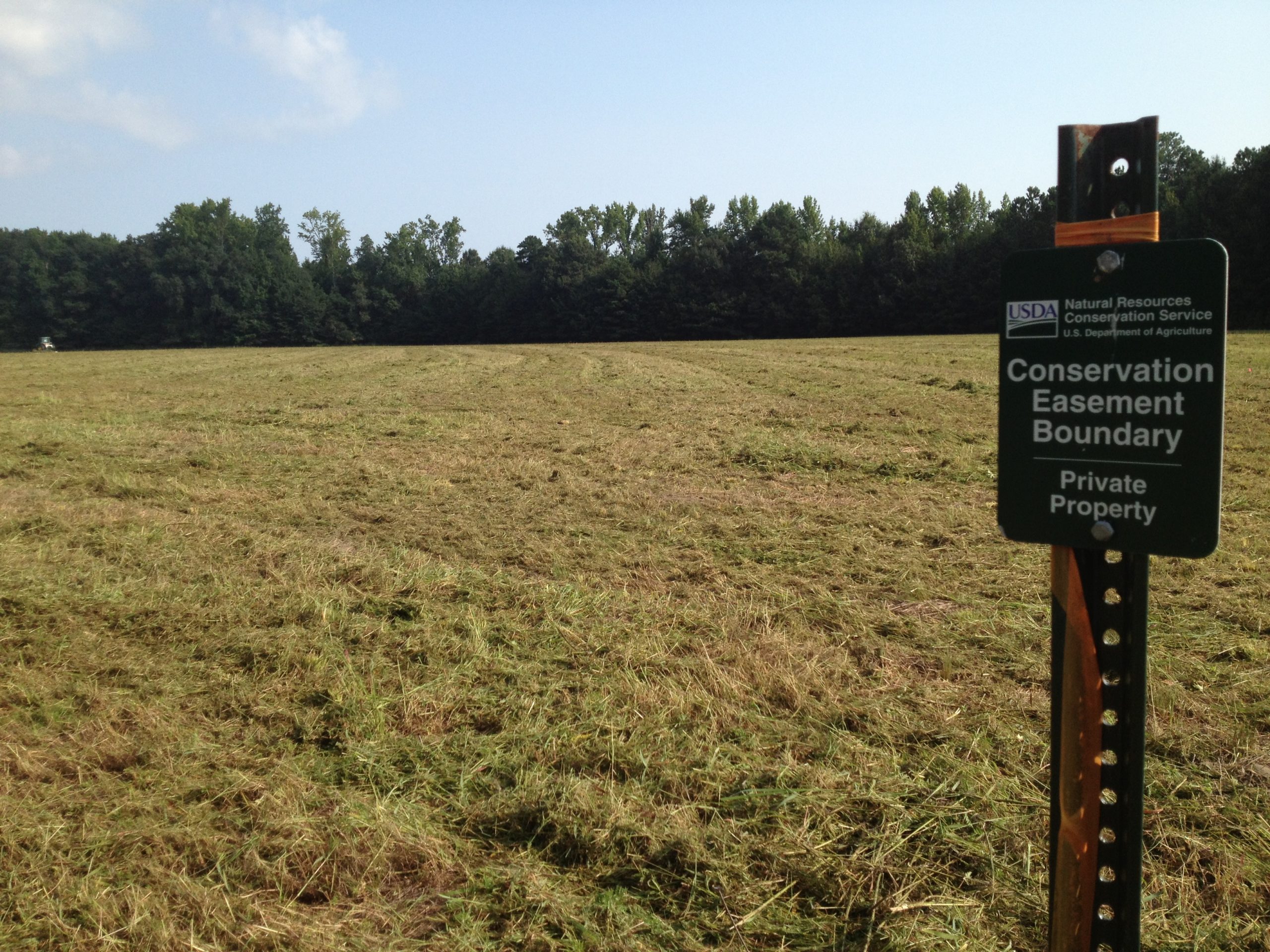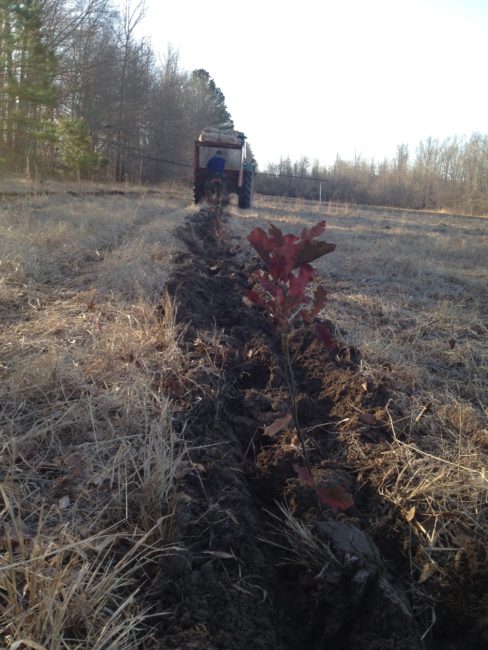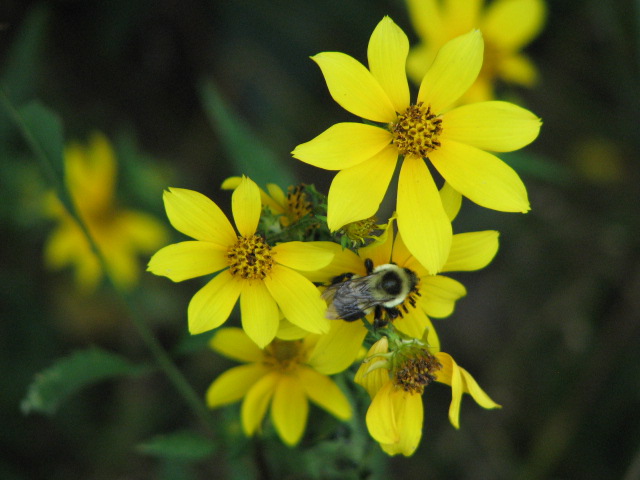Contributed by Land Trust Land Manager Andy Prewett, NRCS Forester Brian Bradley, and NRCS Wildlife Biologist Jim Schrenkel
In 2004, the Land Trust was donated just over 60 acres of land associated with Webb Pond in north Madison County. The property was composed of a combination of wooded wetlands and farmland. The farmland had been farmed for decades with mixed results. Due to the proximity of the wetlands, the farmland crops more often than not couldn’t be harvested due to localized flooding.
As our very first proactive management project, and in cooperation with the farmer of the property, the Land Trust opted in 2013 to take the property out of rotation and restore it to its lowland hardwood state. The property, a conservation property – not open for public recreation, was enrolled in a USDA Natural Resource Conservation Service program known as the Wetland Reserve Program.

The USDA’s Natural Resource Conservation Service encourages management of natural resources through a variety of programs with a wide assortment of partners. While private landowners make up the over-whelming percentage of forest owners in many parts of the United States, non-governmental organizations like the Land Trust of North Alabama play a critical role in the nation’s conservation efforts.

In contemplating a wetland restoration project, the Land Trust, in consultation with NRCS, took into consideration these statistics:
- One-third of all Threatened and Endangered (T&E) species live only in wetlands
- One-half of all T&E species & one-half of all bird species use wetlands for part of their life requirements
- Wetlands provide essential habitat for migratory birds and waterfowl
- Alabama is 5th in the nation in plant and animal diversity
- Alabama is 1st in the nation in freshwater species diversity with 750 species of fish, mussels, snails and crayfish
Considering the best conservation needs of the property, the Land Trust, working with NRCS, enrolled 40 acres of the property into the WRP and sold a perpetual easement to the conservation service. In return, NRCS developed a restoration program for the property and covered the costs of implementing that plan.
The plan saw the installation of a half-acre shallow water pond for migratory bird habitat and planted more than 5100 trees, primarily in the oak family, to re-establish oaks in the habitat. The project was started in September of 2013 and completed in February of 2014. Since that time, the Land Trust has continued to monitor the farmland transition back to hardwoods and seen the naturalization of the pond. The NRCS monitors the property annually to ensure the program parameters are adhered to.

There have been some challenges in the restoration program dealing with invasive species. A small patch of Cogon grass appeared within the planted area that was addressed with herbicide treatments. Lately, populations of Callery pear trees have shown themselves and will be removed. As the property adapts to the new tree populations, the Land Trust along with NRCS will continue to monitor the property to ensure a successful transition from unproductive farmland to a robust woodland habitat.

The benefits of such a WRP program are significant, considering Wetlands provide many ongoing benefits including:
- Filtering pollutants and sediment
- Flood water storage
- Recreational opportunities
- Wildlife habitat
Fast forward to 2022 and a healthy young forest is thriving at Webb Pond. Oak seedlings planted in rows twelve feet apart now grow shoulder-to-shoulder with 15-25 feet tall native species that seeded in from adjacent “mother” trees. This natural succession occurs whenever open land next to mature trees is left undisturbed. Bare land always yearns to be forested. However, enhancing natural succession with targeted species allows for a more diverse and dynamic habitat to emerge.

What will this forest look like in the next ten years or even in 2050? Competition for sunlight, soil nutrients and water will result in a natural culling of weaker trees and we can expect a more open, park-like forest. The planted oaks that survive will begin producing acorns, providing food for blue jays, whitetail deer, wild turkey and other animals. Salamanders and other aquatic species will be evident near the shallow water pond.

Preservation, as defined as maintaining a natural environment in its current state forever, is not possible because ecosystems are dynamic, living and growing. The forest we enjoy today will change as years march on. Fortunately, groups such as the Land Trust who obtain land, restore essential ecosystems, manage resources and prevent land from being converted to other non-natural uses are practicing true Conservation in Action. The Land Trust and NRCS are proud to be a partner in these efforts.

Learn more about the Land Trust’s current conservation projects at landtrustnal.org/preserve.
This is one of the Land Trust’s conservation properties and not open to the public.
